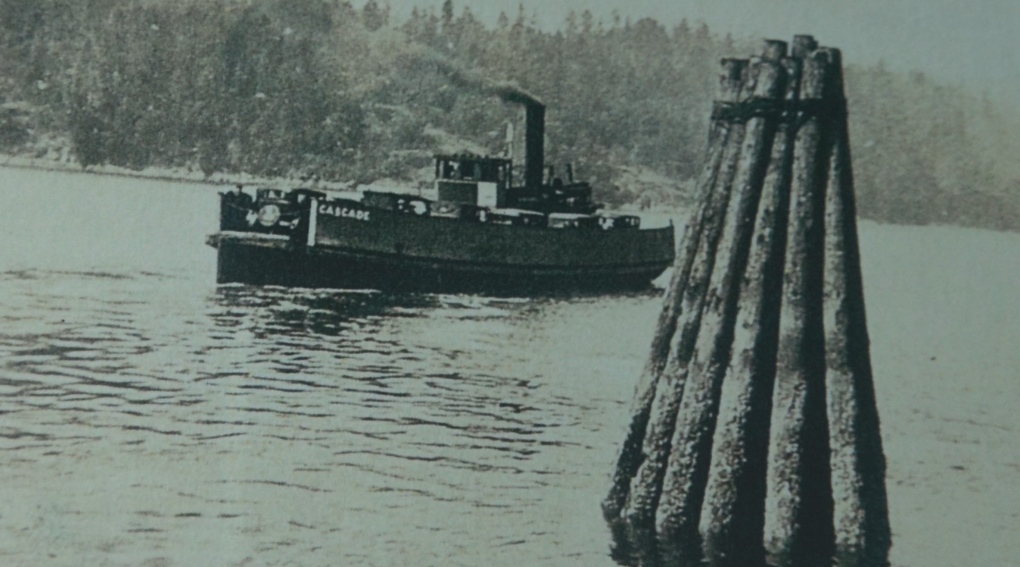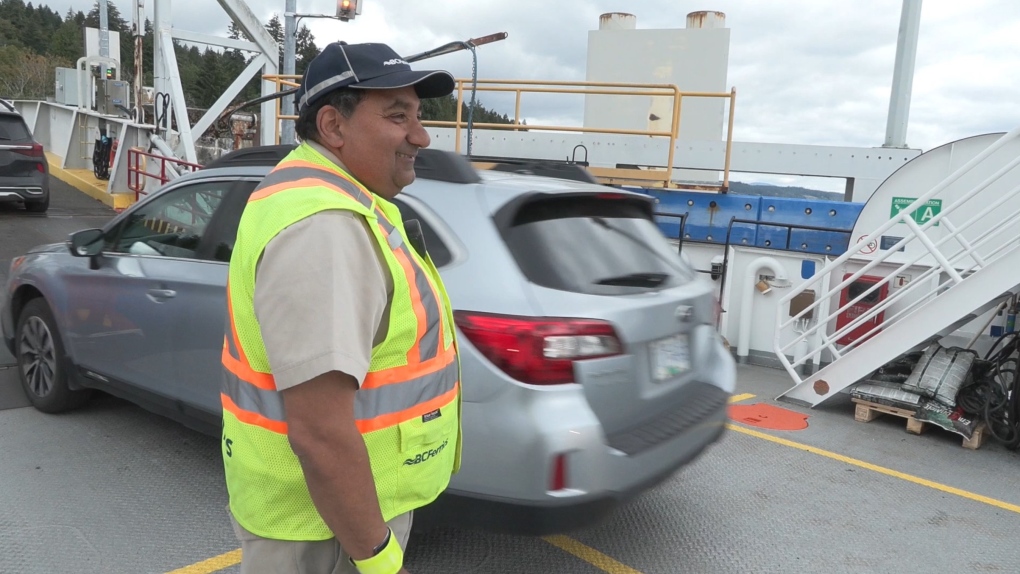Longest running ferry route on B.C.'s coast to celebrate 100 years in operation
For the past year, Geoff Keddie has called his morning commute absolutely gorgeous. The North Saanich resident has been travelling across the Saanich Inlet to get to work onboard the M.V. Klitsa five times a week.
“It’s a great environment, I love this ferry,” said Keddie. “Everyone is running around, everyone is smiling.”
The route is the oldest continuous ferry service on the coast of British Columbia. It was started by two former naval officers in November of 1924, meaning the route is about to hit a major milestone.
“This November will be 100 years, so it’s pretty amazing,” said Martin Nielsen, senior captain of the Klitsa.
The original vessel was a wooden-hulled coastal steamer called the SS Cascade. It was altered to allow cars to drive on and off of the bow and stern.
One month after going into service, the SS Cascade hit a bit of a snag, sinking at the Mill Bay ferry dock after running into some thick ice on the inlet. The vessel was raised, repaired and back in service a short time later.
The SS Cascade was later rechristened as the Brentwood Ferry after being refitted with internal combustion engines.
 The SS Cascade served the route from its early days until the 1950s.
The SS Cascade served the route from its early days until the 1950s.
“(In the 1950s), the Mill Bay Ferry was brought in,” said Nielsen. “The Mill Bay and the Brentwood Bay Ferry both worked this area while they were finishing the paving of the Malahat (Highway) back in the late '50s.”
Once that paving was completed, the Brentwood Ferry was retired, leaving just the Mill Bay Ferry to run the route.
In 1969, the company operating the route was bought by BC Ferries, which continues to run it to this day.
“It’s almost like being on a vacation coming on this ferry,” said Sylvia Sangha, a regular ferry passenger on the run.
The M.V. Klitsa has the capacity to carry 19 vehicles onboard, with 150 passengers. The vessel completes nine return trips each day between Brentwood and Mill Bay. That journey connecting the two points takes roughly 25 minutes to complete.
“It is considered by many as being the island’s most scenic route,” said Reet Sidhu, senior communications advisor with BC Ferries.
“The scenery is so beautiful,” said Sangha.
The crossing has, at many times, become the only way in and out of the capital region.
“An interesting story is about how the ferry served as a lifeline during atmospheric river flooding in November of 2021,” said Sidhu.
Over the course of 60 hours, 182 millimetres of rain fell on southern Vancouver Island, causing the Malahat’s Tunnel Hill drainage wall structure to fail. It closed the vital artery into the capital region for three days.
“We added additional crews and additional sailings to keep the ferry service going continuously over the course of three days,” said Sidhu. “That’s a special situation that bonds the community with this ferry service, because it really did help them through an emergency and served as a lifeline.”
Regular passengers say it’s not just the scenery or the occasional whale sighting that makes this route so special. They point to deckhand Hardeep Parmar, who has been working the route for the past 13 years.
“He’s always got a kind thing to say or a joke to tell you,” said Joan Obee, a regular passenger on the M.V. Klitsa.
“He’s absolutely awesome,” said Keddie.
 Deckhand Hardeep Parmar has been working the route for the past 13 years. (CTV News)
Deckhand Hardeep Parmar has been working the route for the past 13 years. (CTV News)
Parmar, being a humble guy, says it’s not him that makes the trip so pleasant for passengers, but those passengers themselves.
“You get to know people, people get to know us and it’s like a family here,” said Parmar.
He says what makes the route so unique is the tight-knit communities it serves.
“Our wake touches the three First Nations,” said Parmar, pointing towards the Saanich Peninsula while onboard the Klitsa in the Saanich Inlet.
“We have the Tsartlip First Nation, the Pauquachin, the Tseycum over there and we’re going to the Malahat First Nation just to have that sense of history.”
All those First Nations travelled the inlet’s waters long before Europeans arrived.
The Mill Bay Terminal sits in the heart of the Malahat Nation. Although the nearly 100-year relationship between the ferry service and that nation has come with the occasional bout of rough waters, things are beginning to change.
The Malahat Nation told CTV News in a statement:
“The terminal has had a notable impact in some adverse ways; however, both BC Ferries and the Malahat Nation are keen to enhance the relationship and have signed a relationship protocol to discuss and address important issues to the nation.”
That relationship is a work in progress, much like the evolution of the ferry service that will soon be celebrating a major milestone that no other ferry route can claim on B.C.'s coast.
CTVNews.ca Top Stories

Second Cup closes Montreal franchise over hateful incident
Second Cup Café has closed one of its franchise locations in Montreal following allegations of hateful remarks and gestures made by the franchisee in a video that was widely circulated online during a pro-Palestinian protest on Thursday.
‘It’s pretty emotional:’ N.B. family escape fire, plan to rebuild home
A family in Riverview, N.B., is making plans for Christmas and the future after escaping a fire in their home on November, 14.
Cargo ship runs aground in St. Lawrence River near Morrisburg, Ont.
A large cargo ship remains stuck in the St. Lawrence River after running aground on Saturday afternoon.
Scurvy resurgence highlights issues of food insecurity in Canada's rural and remote areas
A disease often thought to only affect 18th century sailors is reemerging in Canada.
B.C. man awarded $800K in damages after being injured by defective bear banger
A B.C. man has been awarded nearly $800,000 in damages as compensation for injuries he sustained from a defective bear banger, according to a recent court decision.
A man called 911 for help during a home invasion. Las Vegas police fatally shot him
A Las Vegas man called for police help during a home invasion before an officer fatally shot him, according to authorities and 911 calls.
Cat caught in hunting snare rescued by BC SPCA
Donations are ramping up for a BC SPCA cat with a mangled paw after being caught in a hunting snare, one of a rising number of pets to fall prey to the hunting device.
These royal residences are opening their doors this Christmas
Not so long ago, if you wanted to spend Christmas with the royal family, the only way to get close was to press your nose up to the TV screen during the monarch’s Christmas speech.
'Still working full time on it:' One year later police continue to search for gunman in Caledon double murder linked to ex-Olympian
One year after a couple was shot and killed in their Caledon home in what investigators have described as a case of mistaken identity, Ontario Provincial Police say they are still trying to figure out who pulled the trigger.
































